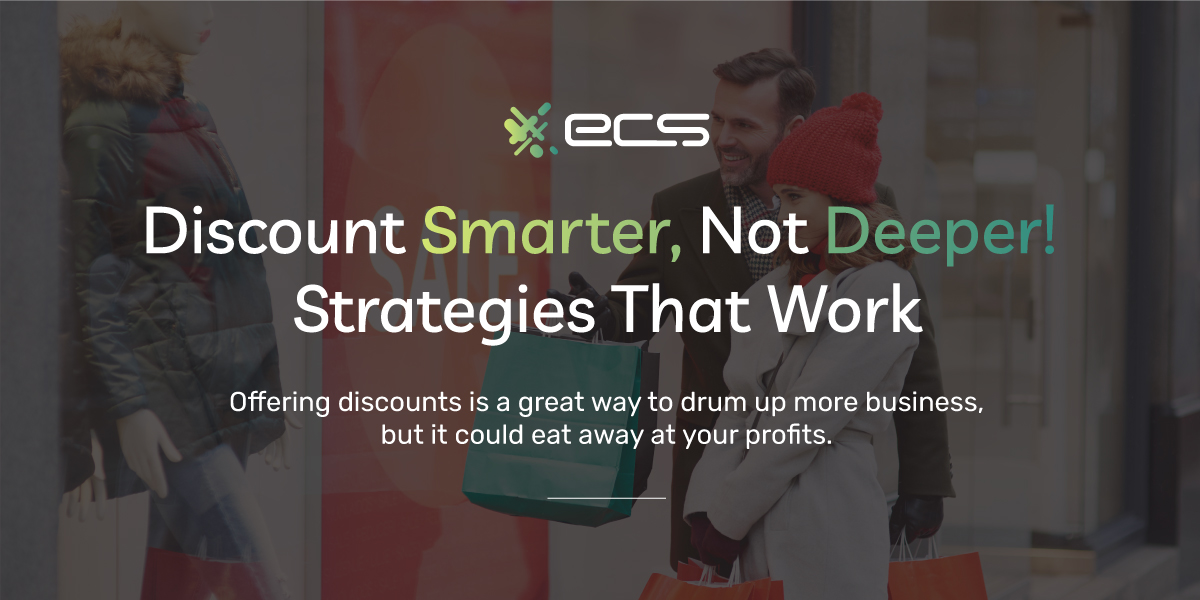Are discounts a necessary part of running a business? Not inherently. However, many businesses find discounts useful as a periodic tool for driving revenue. But discounts can also eat away profit margins and devalue your business in the eyes of your customers. What you need are discount strategies that give you all the benefits of boosted sales while avoiding revenue loss.
Discounts help move stale inventory or push your business through a slow season. Discounts can bring new customers in the door and undermine competitors’ attacks. So how do you balance reaping the benefits of discounting and avoiding its pitfalls?
You’ll have to discount smarter, not deeper. Spoiler alert: you cannot do this without data, and you cannot obtain that data without a POS.
But before we get there, let’s talk about the who, what, when, where, why, and how of discount strategies.
What Do Customers Think About Discounts?
Most consumers have used discounts at some point. Some people tend to think of coupon clipping existing only within the domain of baby boomers. It fits in with an overall perception of that generation as financially savvy, frugal, and wise about long-term planning.
However, coupons are not just for grandma and grandpa. Consumers of all types and stripes are using coupons and discount codes. They may not clip out the paper circulars from the grocery store. But they may use a coupon from their email, rewards app, or browser extension.
Around 94% of polled consumers use coupons, and 38% make larger purchases because of them. This is likely related to the fact that 89% of those polled consumers said price was a primary consideration when making a purchase, more so than brand name (45%).
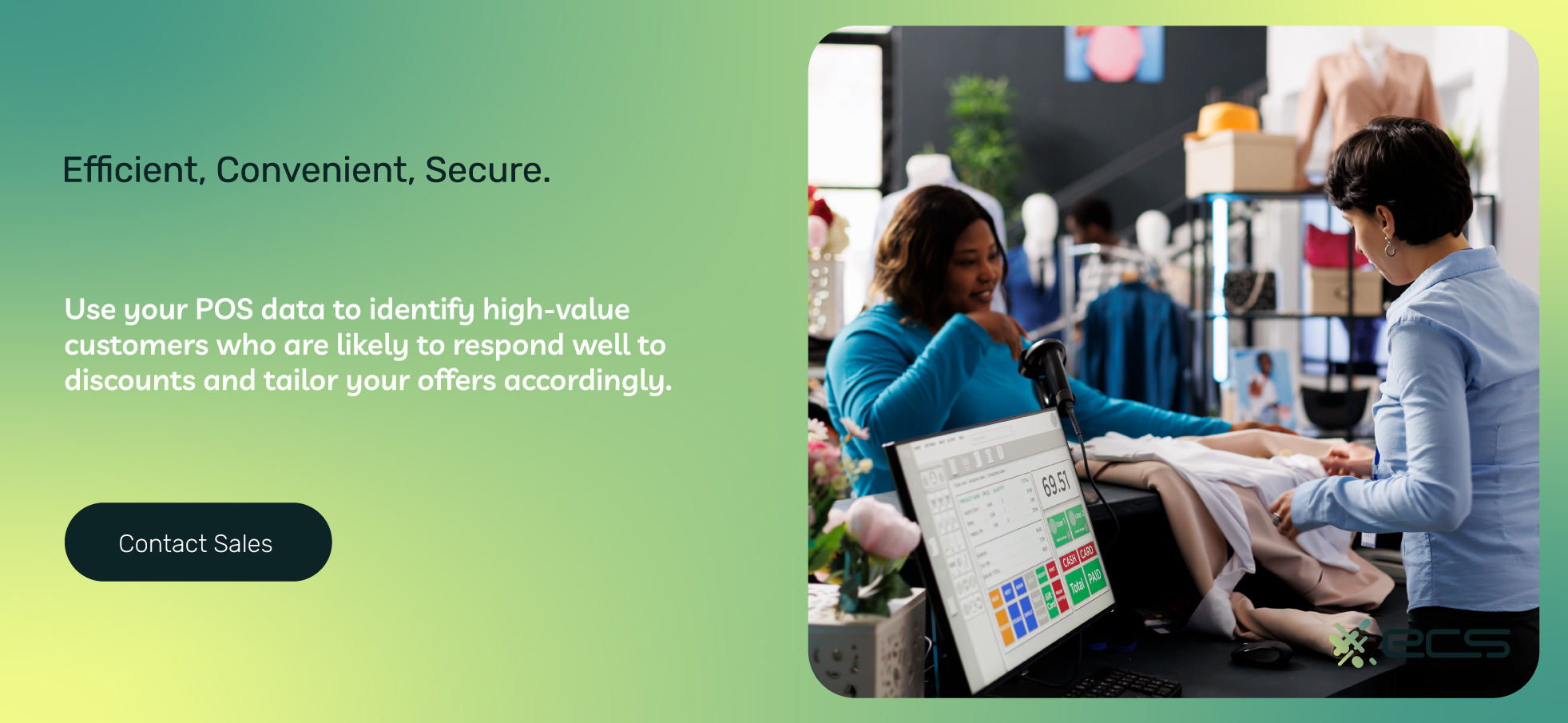
Do The Rich And Famous Clip Coupons?
But wait… there’s more. You may think coupon clipping is only for people who need to save money. Not so. 87% of low-income households use coupons, and 86% of middle-income and 85% of high-income households.
Everybody is trying to save money. In fact, half the polled consumers making $150,000 or more annually use coupons at least 50 times per year.
Around 85% of consumers are willing to shop around multiple stores to find the best deals. To elaborate, that means (for example) grocery shopping at two or more places if meat is less expensive at Costco but organic produce is cheaper at Whole Foods.
Consumers are often loyal to specific brands, but they are willing to branch out if it means saving money. 82% are willing to switch stores over a coupon or weekly special, 39% will try out a new brand, and 86% will try out new products.
All of these statistics relate to consumers in a business-to-consumer context. They show the serious marketing potential of a good coupon for solidifying brand loyalty or bringing in new customers. For example, emails featuring a coupon have a 48% better ROI than other promotional messages.
BOGOS, Percentages, And Fixed Dollar Discounts
BOGO or buy one get one free is a popular type of consumer-facing discount. It’s an excellent way to drive sales and clear out unwanted inventory. The BOGO promotion should be applied to a product of equal or lesser value. It does not necessarily have to be the same product.
Percentage discounts reduce the price of a single item or the entire purchase by a fixed percentage. These discounts work well when the perceived value of the underlying discounted product is high. A fusion of the above two discounts is the Buy-One-Get-One-Discounted. For instance, you may tell customers (via coupon) that if they buy one of a specific item, the second is 50% off.
Dollar discounts involve taking a fixed dollar amount off the sale. Sometimes, this is more understandable to consumers because percentages can yield different discounts based on the sale amount. Some consumers may have difficulty translating 20% off into something meaningful, but saying $10 off your purchase of $100 or more is easier to digest.
You’ll need to play with the amount of the dollar discount, and it will relate to the product in question. $5 will not mean a lot for a $350 guitar or a $5,000 jet ski. But $30 off the guitar or $300 off the Jet Ski does sound worth it.
Some discounts may be location-based. These discounts are perfect for store openings, market testing, or community engagement. For instance, a brand opening a new store could offer discounts at that store only.
Bundle Discounts
Bundle discounts are also a popular B2C discount type. Amazon, in particular, tends to use bundle discounts very frequently. In order to access the discount, customers must bundle certain items together. Usually, the items are related.
For example, if someone is purchasing a sleeping bag on Amazon, they might see a suggestion at checkout to purchase a tent and a camping lantern since “other customers” have purchased the same items.
In truth, “other customers” have purchased the same items. Amazon is not just spitballing based on what items make sense together. They have vast amounts of data that show what items customers typically purchase together.
They can use this data to pick up on trends and continue them. For instance, if Amazon knows that many shoppers have purchased that trifecta of camping items, it knows there is a greater likelihood of a future shopper repeating the trend.
If you didn’t have Amazon’s advanced tools, you could use some guesswork to create product bundles. However, as it turns out, if you have a POS, you have access to analytics that can assist in creating bundle discounts. The POS will tell you what items customers typically purchase together, or at least it can if such information can be displayed in your dashboard.
B2B Discounts: Wholesale, 2/10, And Others
Now, what about B2B discounting? Sometimes, B2B discounts will be similar to B2C discounts (percentage, dollar amount, BOGO, seasonal, etc.). However, other types of discounts are more applicable in B2B interactions.
One is the wholesale discount or minimum purchase discount. Wholesale discounts are for customers who buy goods in bulk. The exact amount of the discount is usually tiered based on how much the customer buys. The more they buy, the deeper the discount goes.
Another type of frequently used discount is invoice-related. These discounts incentivize paying invoices early. One example is the 2/10 Net-30 discount. This arrangement gives the customer 30 days to settle the invoice but a 2% discount if they pay within ten days.
A business may also offer discounts for COD or cash on delivery. Retailers do not like to pay COD because they want time to recoup the inventory cost from their customers. But of course, wholesalers may prefer COD because it keeps their cash flow robust and checks collecting payment off their to-do list.
For most B2B industries, discounts are their most significant marketing investment. Consumer-facing retailers need to put more into marketing because consumer purchasing is much more influenced by emotion. Business owners are looking to get the most value in the B2B world, where the bottom line is the primary concern.
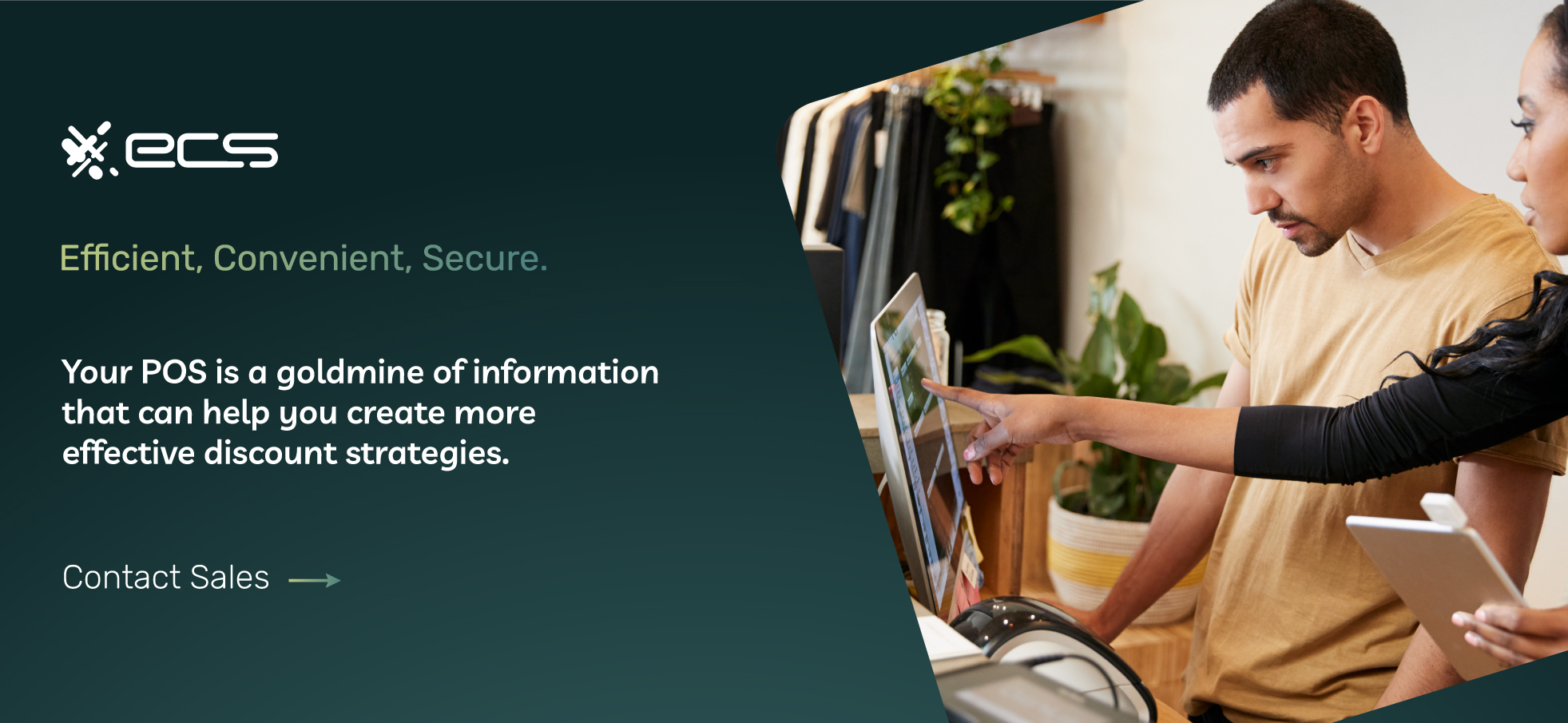
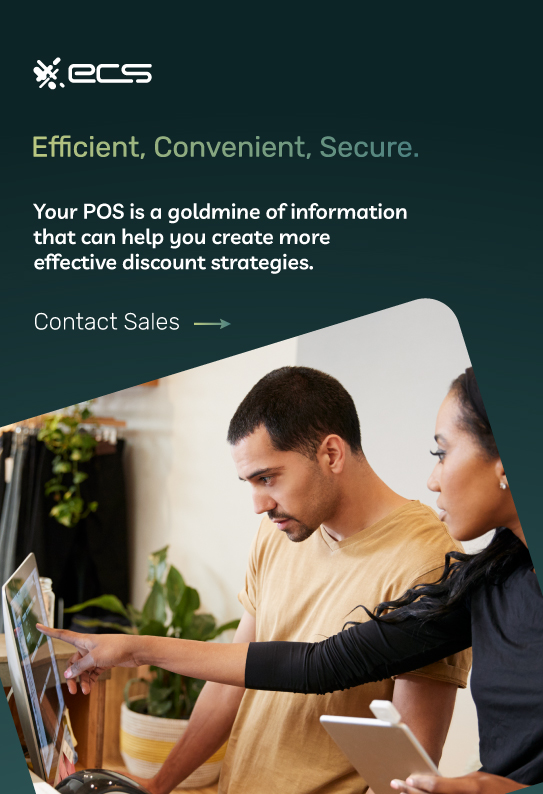
Discounting Problems
Discounts have some benefits, which we’ll outline shortly. But let’s get the bad parts of discounting out of the way. As mentioned, there are different motivations in B2B versus B2C transactions. However, the pros and cons of discounting usually apply to both contexts.
Problem #1: Profit Margin Erosion
One problem is the erosion of profit margins. The actual profit margin of an item is hidden from your customers. It exists between the cost of procuring or producing an item (known only to you) and the price you present to your customers, whether they are consumers or other businesses.
How deep can you cut into a discount before you go from helping your business to hurting it? To elaborate, a 10% discount may not entice customers. Perhaps a 15% discount is. But what if 15% is cutting too deep into your profits here?
We are not posing this question to Scrooge McDuck, who loves diving into his endless piles of money. We pose it to business owners such as yourself who have business expenses. The accurate picture of how much profit you can make from each item you sell is not apparent until after all of these expenses are added up.
And really, you don’t know what that is until the end of the year, or at least the end of the quarter. Payroll, taxes, insurance, rent, utilities, inventory, marketing, consultations, and the periodic taco truck for your staff all add up.
It’s a mix of fixed and variable expenses that are hard to guess without some consistent history of statements or advanced computer modeling. If you can’t lock down some numbers, arriving at the right discount amount requires incredible intuition or a crystal ball.
The problem becomes more acute in certain types of industries. Retailers have wider profit margins and a little bit more room for error. However, wholesalers tend to have razor-thin margins, and a badly-calculated discount can be disastrous.
Problem #2: Reducing Perceived Product Value
Sometimes, discounts that are too steep can send the wrong message. To be more precise, they send a message of desperation. Customers know that businesses going out of business will discount items by 75% or more. Everything must go!
If you are offering discounts beyond 50%, you might want to spell out why so that customers don’t make up their own story. This is one of those rare times when it’s okay to be transparent (or at least pretend to be)—looking to liquidate extra inventory!
Pairing high discounts with the scarcity factor can dissuade customers’ concerns about product value or the health of your business. 75% off for the next 48 hours only! Get it before it’s gone! We already know (as seen above) that coupons and discounting can drive business. And we also know a sense of urgency can accelerate sales as well.
Steep discounts or frequent discounts can also make your products seem cheap. Consumers are relatively aware of pricing spectrums and know that venues like Dollar General and Dollar Tree are named for a reason. They know that things at Walmart are cheaper than similar-appearing items at Macy’s because those rollback prices indicate lower-quality goods.
No offense, Walmart shoppers. However, regarding sales, your pricing points create consumer perception of an item’s value. Everybody knows that infusing water with bubbles and bottling it in green glass makes it possible to charge $10 per bottle when tap water is free.
On the other hand, some businesses are inherently associated with discounted prices. Outlet stores, consumer-facing wholesalers (like Costco), and liquidators can offer fast and furious discounts without impacting consumer perception of their quality. However, other retailers must consider how discount amounts and frequency make them look.
Problem #3: Inventory Issues And/Or Overload
Customers may wait until they know a coupon is coming, which can mess with your inventory. They may pause purchasing until they know they’ll get that coupon. Meanwhile, your inventory keeps piling up and collecting dust.
Alternatively, they may rush in all at once and scoop up a particular discounted item, leaving you with none left for future customers. These customers may then be upset and take their business elsewhere. The problem is exacerbated if the discount allows customers to buy multiples of a given item.
Customer coupon stampedes are also a problem for service-based businesses. In fact, they may be even more of a problem. Customers are upset but somewhat understanding when you tell them a particular item has sold out. Unfortunately, they are less understanding if you tell them you’re overbooked for services.
Usually, that’s because they see your employees (or you) at work right in front of them. There is this unspoken assumption that if you’re open and have employees, you should be able to squeeze them in for an appointment. Obviously, you know that is not true. But they don’t.
Problem #4: Customer Expectations
As you can see, discounts can generate problems for product and service-based businesses. Yet another issue is that you may “train” significant portions of your customer base to only shop during certain times of the year. In addition to inventory problems, this can create issues with your cash flow.
And if you offer discounts too regularly, or specific discount amounts too regularly, you might “spoil” your customers. They may practically refuse to purchase items when they are priced normally. This can lead to a loss of business as they migrate to other businesses where coupons or discounted pricing is active.
Of course, there will be some times of the year when customers just expect discounts, and if you don’t give them, they’ll wonder why (and/or shop elsewhere). Holiday season coupons are a given. Customers expect discounts on Black Friday in particular. But other days like Labor Day, Memorial Day, Presidents Day, and July 4th are also well-known sale days.
All four issues (expectations, inventory, overload, profit margins, and value) require striking a balance between offering value and maintaining a positive brand perception. Large businesses have entire departments of analysts or hire large consulting firms like Deloitte or McKinsey to crack the code.
By contrast, you might have to do more guesswork or intuition-based thinking. However, recent developments in software, AI, and machine learning make it possible for smaller businesses to “compete” with larger corporations when analyzing data.
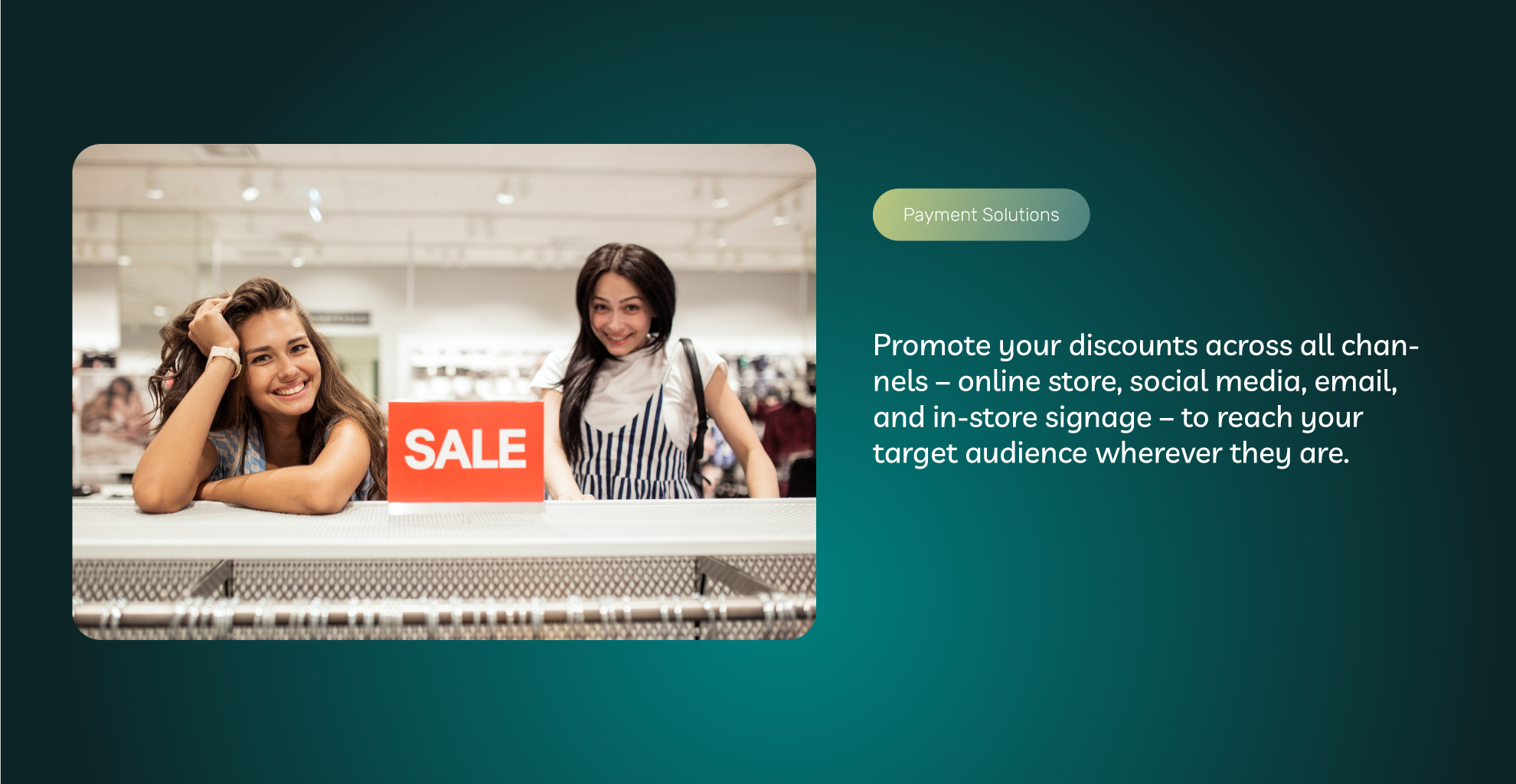
7 Discounting Strategies That Work To Retailer’s Advantage
Now that we’ve reviewed some of the pitfalls of discounting let’s look more at what discounts can offer and how to build them into your pricing strategy intelligently.
Discount Strategy #1: Gift Cards As A Discount
Let’s look at a strategy to discount smarter with fixed dollar discounts. This strategy involves partnering with local businesses. It’s something that certain vendors of large, expensive items use fairly frequently. That is, they give away gift cards.
How often have you seen a promotion for a new vehicle where the dealer will give you a $500 gift card at closing? Or an appliance vendor will provide customers with a $200 gift card for purchasing a new washer and dryer?
On the surface, these may essentially seem the same as a cash discount. To savvy consumers who care about saving money, they may feel that the savings are the same. If they don’t get $500 off the car, they can use that $500 gift card toward something else.
But to the business, there can be a huge difference between cash discounts and gift cards. That’s because the gift cards can be purchased in bulk, which means they will actually cost you less. Let’s look at an example.
Suppose, for instance, you partner with a related business to acquire $5,000 worth of gift cards. You will give every customer who spends $500 a $50 gift card. But because you purchased $5K worth of gift cards, that local business sold them to you 10% off. This means that while you essentially present a 10% reward to your customers, it only eats into your profit margin by 8%.
Again, from the customer end of things, nobody is thinking about this. They just see they are getting a “discount” on the item. But the discount ultimately costs you less. It’s not truly a discount but an incentive for purchasing. However, it may have the same effect in terms of inspiring purchases.
Discount Strategy #2: Rebates
Rebates are another savvy way to offer discounts. That’s because some customers will not take the steps necessary to claim the rebate, which saves you money. If you are retailing items you’ve purchased from suppliers or manufacturers, and they offer rebates, you can advertise their rebates. With this option, discounts won’t cost you anything.
Either way, rebates are a great way to discount smarter. Keep in mind that you will need to explain the terms of the rebate clearly. You must provide the customer with the necessary steps for claiming their rebate. Sometimes, that can be as simple as directing them to the manufacturer’s website.
Idea #3: Loyalty-Based Discounts
Another way to discount smarter and not (too much) deeper is to connect your discounts to a loyalty program. Loyalty programs are a great way to draw repeat business and build consumer (drumroll please) loyalty.
Loyalty programs also increase revenue. Top-performing programs can boost revenue by 15-20%. They may boost customer lifetime value by 85%. Members of loyalty programs generate 12-18% more revenue growth year over year than non-member customers.
In other words, the numbers indicate that loyalty program members spend more money more often and more consistently. Even better, it won’t cost as much as indiscriminately carpet-bombing random email accounts with coupons.
That’s because the discounts associated with loyalty programs can be dangled in front of the customer like a carrot before a horse. For instance, the customer can get a 5% discount after five visits or a 10% discount after ten. These one-time discounts (purchased at the cost of multiple visits) will cost you less than trying to drag non-member customers through the door with the same discounts mailed numerous times.
In times past, merchants administered loyalty programs with punch cards. Some retailers still use them, but they are susceptible to several problems. Customers could lose the card or manipulate the program by stamping or punching the card.
The best alternative is to use POS software. There are third-party applications like Toast in the food business. You can also hire a developer to program a unique app for your business. You can see if your payment processor provides loyalty software or if they have a partner.
Using software for the loyalty program allows you to integrate it with the POS so that sales automatically trigger the rewards.
Discount Strategy #4: Discounts That Incentive Behavior
Who said you had to give anything away for free? The discounts you “give away” could be used to incentivize certain behaviors, such as capturing contact information. This strategy is part of the standard eCommerce sales funnel today.
For example, you could provide website visitors with a coupon if they provide their email. The email is needed to send the coupon, of course. But once you have their email, you can send them marketing material for the rest of history.
Of course, you need to obtain their consent for such emails. However, you can set your popup up in such a way that the customer is encouraged to check a consent box before hitting submit.
The amount of money you put into the discount is not part of your customer acquisition cost. It’s going into a long-term investment of a lifetime customer rather than just being blasted into outer space. As an example of the latter, consider supermarket circulars. Anyone can pick them up and cut out the coupons without commitment.
Supermarkets like Safeway are realizing this and changing the game. They have created their own apps and are offering signup discounts. With the app in place, Safeway can use customer purchase data to send target ads, coupons, and specials rather than just mailing coupons out to every home within a five-mile radius.
Overall, discounting “smarter” rather than deeper is using the discount as an opportunity to capture marketing information, rather than blindly tossing out discounts and wondering if customers will return.
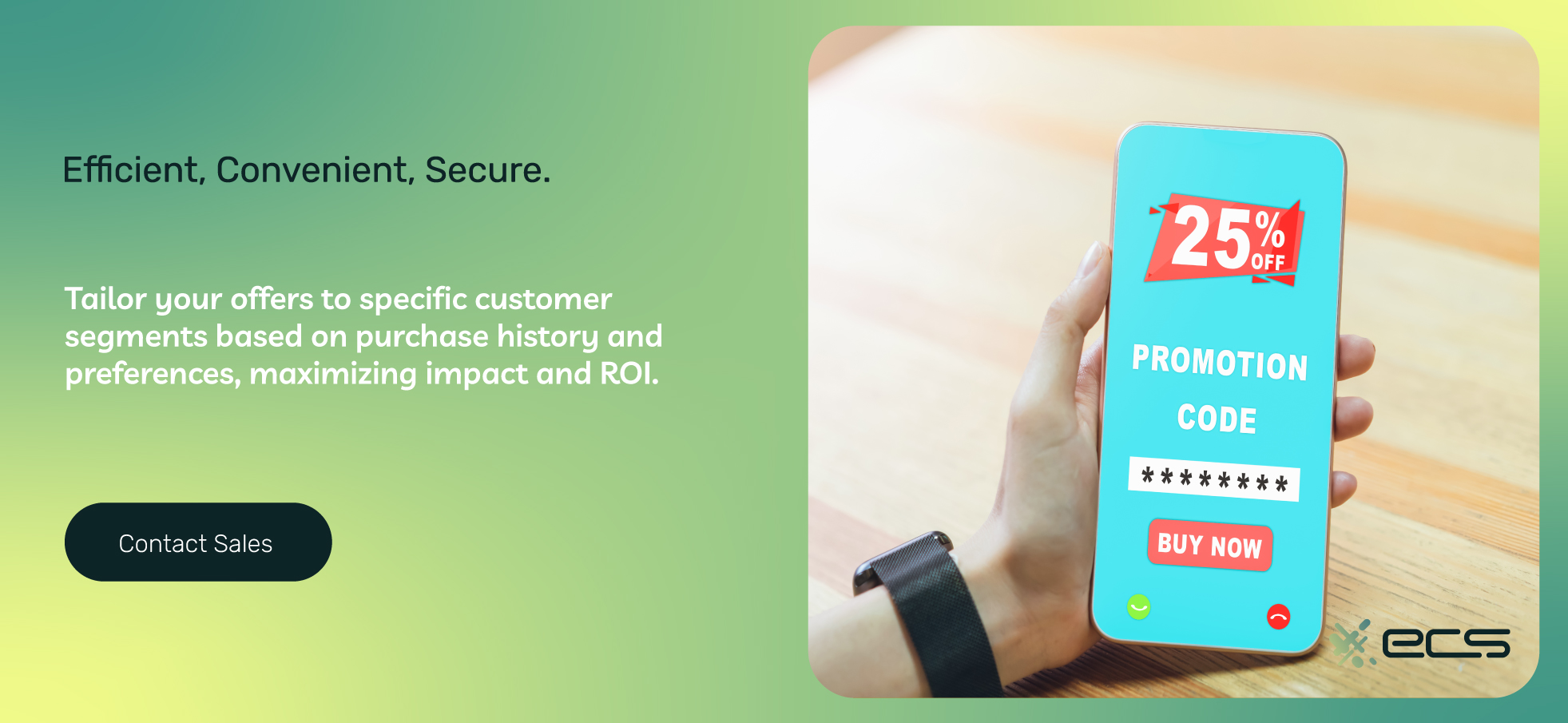
Discount Strategy #5: Free Shipping
One of the biggest reasons customers abandoned their online shopping carts is because of unexpected costs like shipping. Preempt this last-minute roadblock to purchase decisions if you offer free shipping. This discount pricing strategy will improve conversion rates and boost sales.
However, it can also eat into your profit margins more quickly than other discounts. You will have to factor in the cost of shipping in terms of pricing your products. One middle ground is to charge customers a reduced shipping cost, but this doesn’t have the same ring as free.
Discount Strategy #6: Personalized Discounts
New and existing customers appreciated in-store-only discounts and seasonal discounts that apply to everyone. But they especially appreciate personalized discounts. Companies like Amazon have used product recommendations as a cornerstone marketing strategy for solidifying customer retention.
Amazon has browsing history and order data from every customer that they can use to create tailored recommendations for specific products. Gartner found that personalized product recommendations increase conversion rates by as much as 150%.
How exactly can you make these tailored recommendations? That brings us to our final tip for smart discounting.
Discount Strategy #7: Use Data From Your POS
You can determine how to develop a profitable discount strategy by looking at the sales numbers. Continuing the above point, your POS or online payment gateway will tell you which customers buy what items. You can use this information to make tailored recommendations and discounts.
But you can also use that data to figure out discounts in general. Recall earlier that we said the true impact of a discount on your profit margins is impossible to gauge unless you have all the data in front of you. You need your POS and accounting suite to see your profit margins after overhead.
Then, you can assess your discount dollar amounts or percentages. You can pair that information up with the psychology of offering discounts and what you are hoping to achieve (repeat customers, loyalty signups, visits to a location, etc.).
For more information about how your payment processing software can help unlock smarter discounting, contact ECS Payments. Give us a call or fill out our contact form, and we will reach out to you.
Frequently Asked Questions About Smart Discounting
If you want to drive more sales, get rid of old inventory, or compete with your industry rivals, offering specific discounts can be a valuable implementation in your strategy.
However, finding the right balance is crucial to avoid profit losses and devaluing your brand.
Yes! Consumers of all income levels love a good discount. Whether the discount is a markdown or a coupon offer, it’s a great incentive. In fact, 94% of polled consumers from a mix of income levels use coupons, and 38% make larger purchases because of a discount.
You can offer a BOGO (Buy One Get One (free) or Buy One Get One (half off)), a percentage discount (10% to 90% the choice is yours), fixed dollar discounts ($100 off today only! But make sure the fixed amount is significantly less than the cost of the item or service), and bundle discounts (Buy a burger and a large fry, get a drink included). Each type of discount serves specific purposes, and the best choice will depend on the product, audience, and goal.
It’s best to analyze POS sales analytics and inventory. However you choose to discount, be sure your strategy will incentivize more sales rather than discounting sales you already would have made.
To find the right POS system for you, contact ECS Payments.
